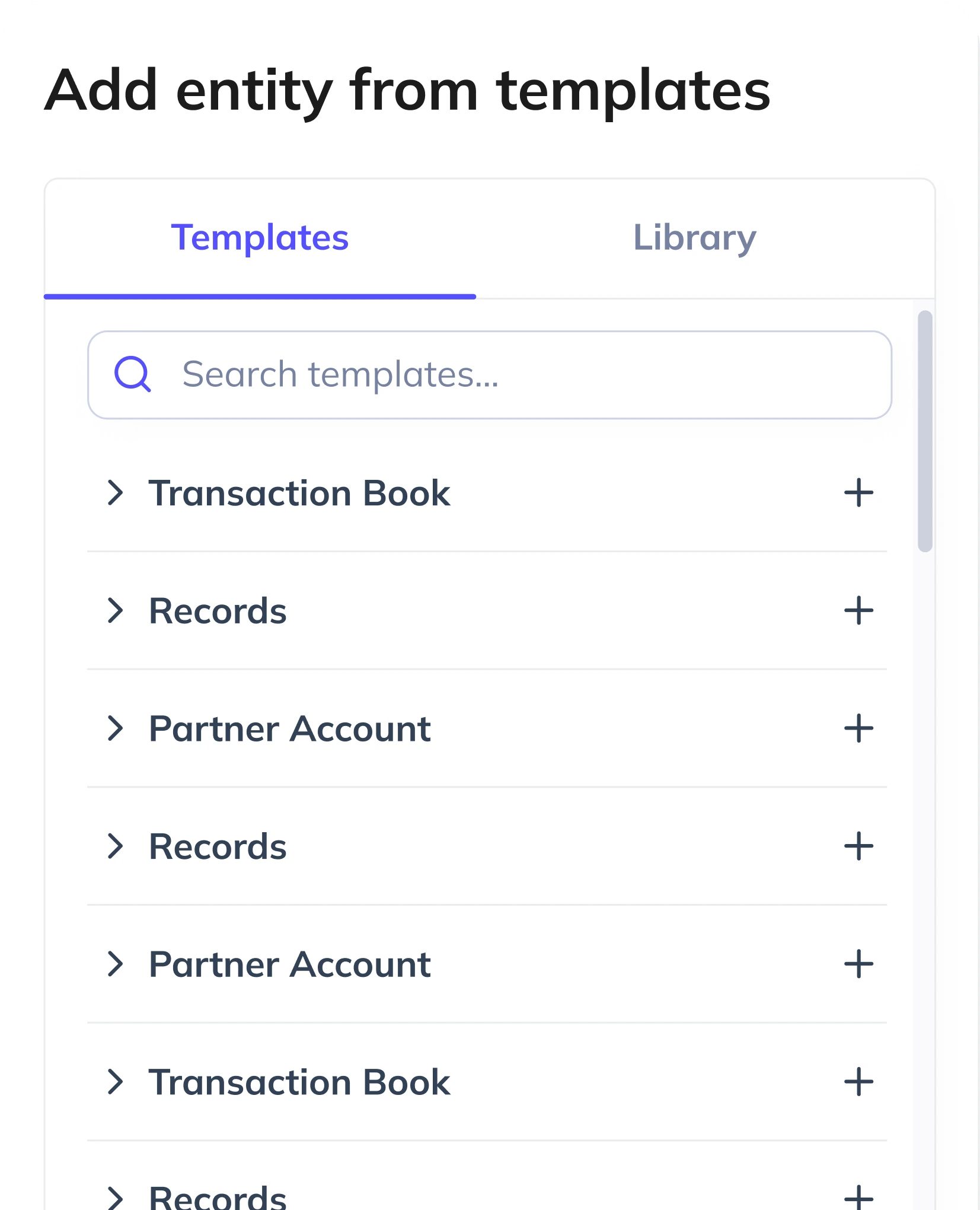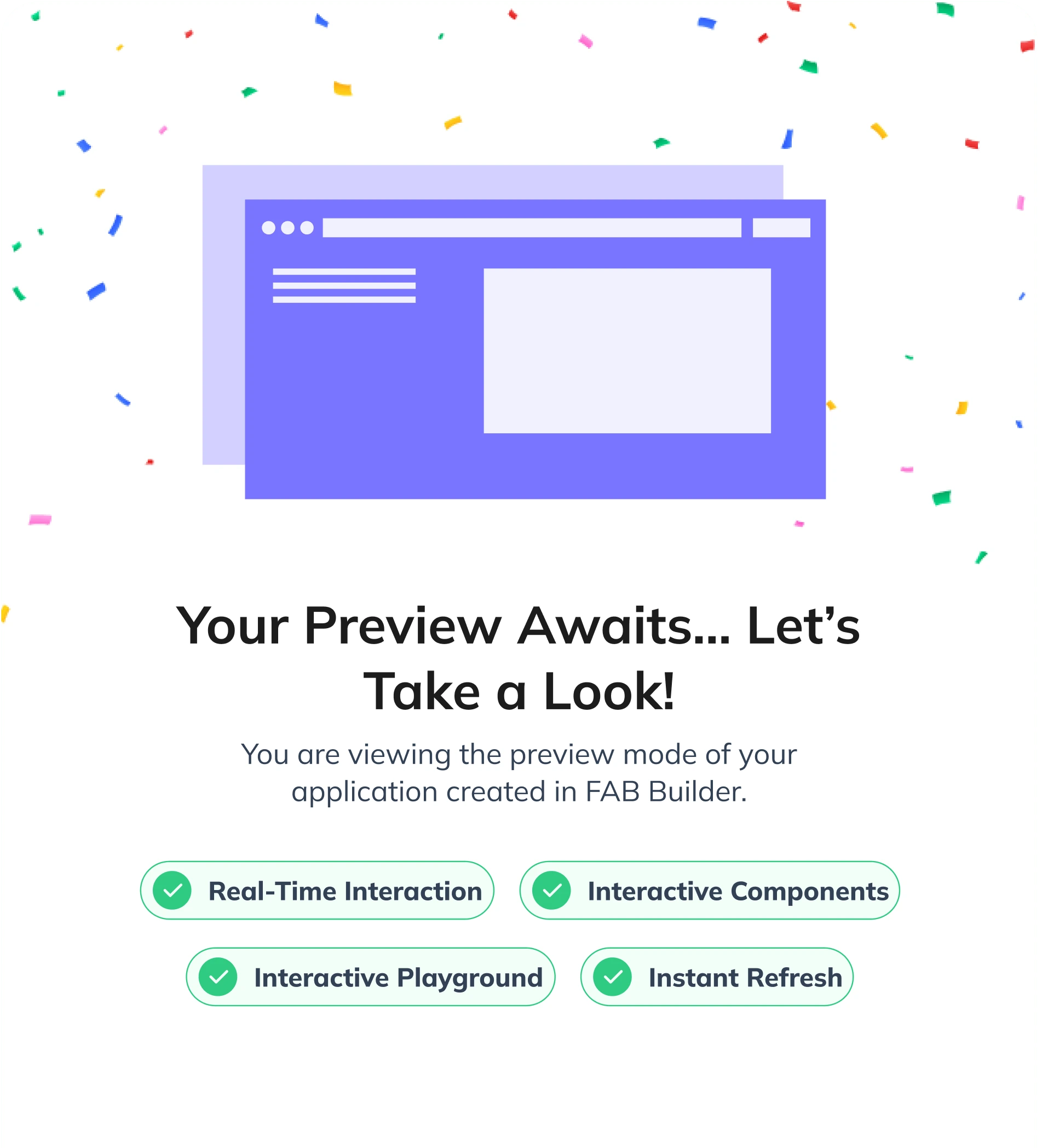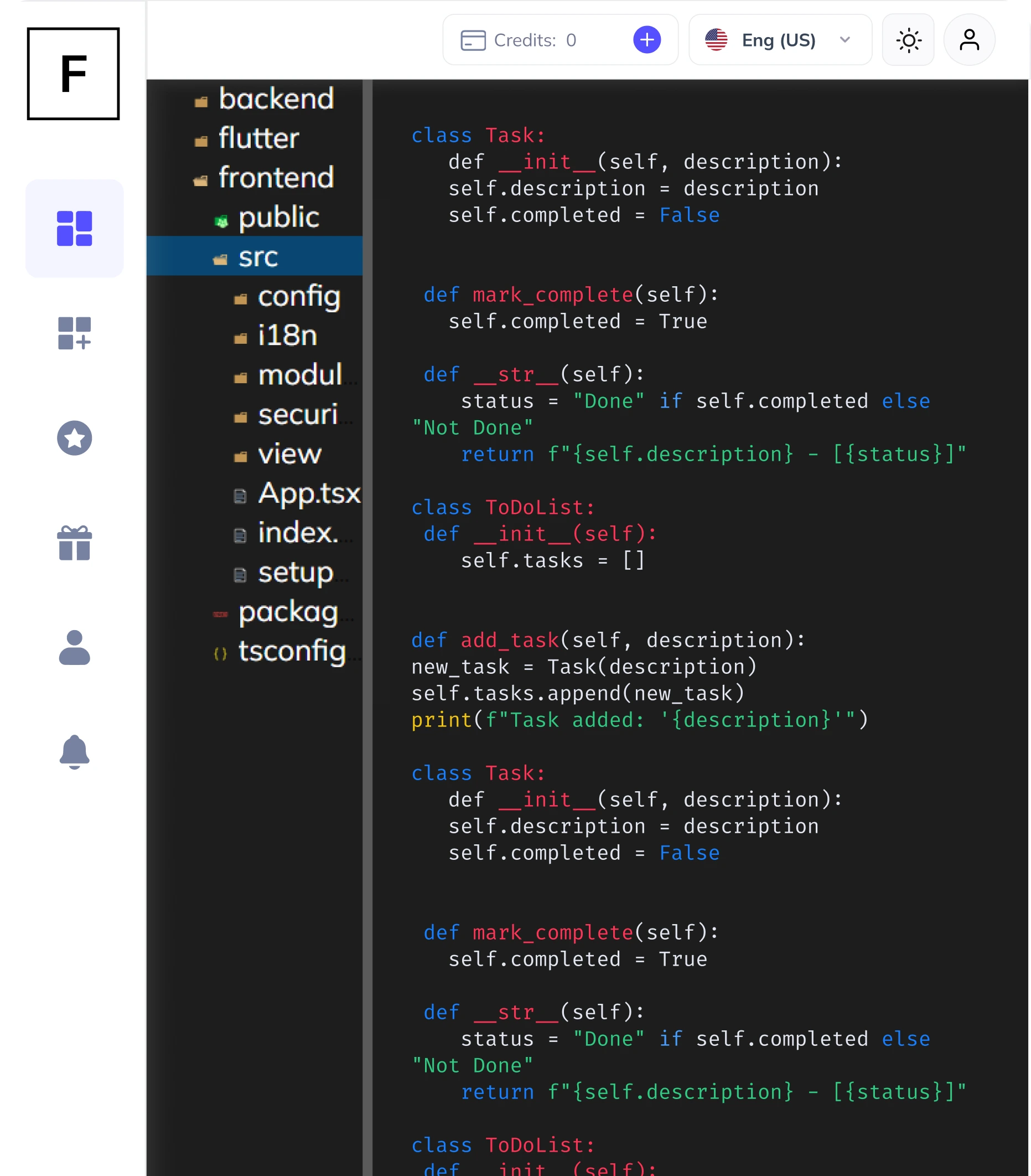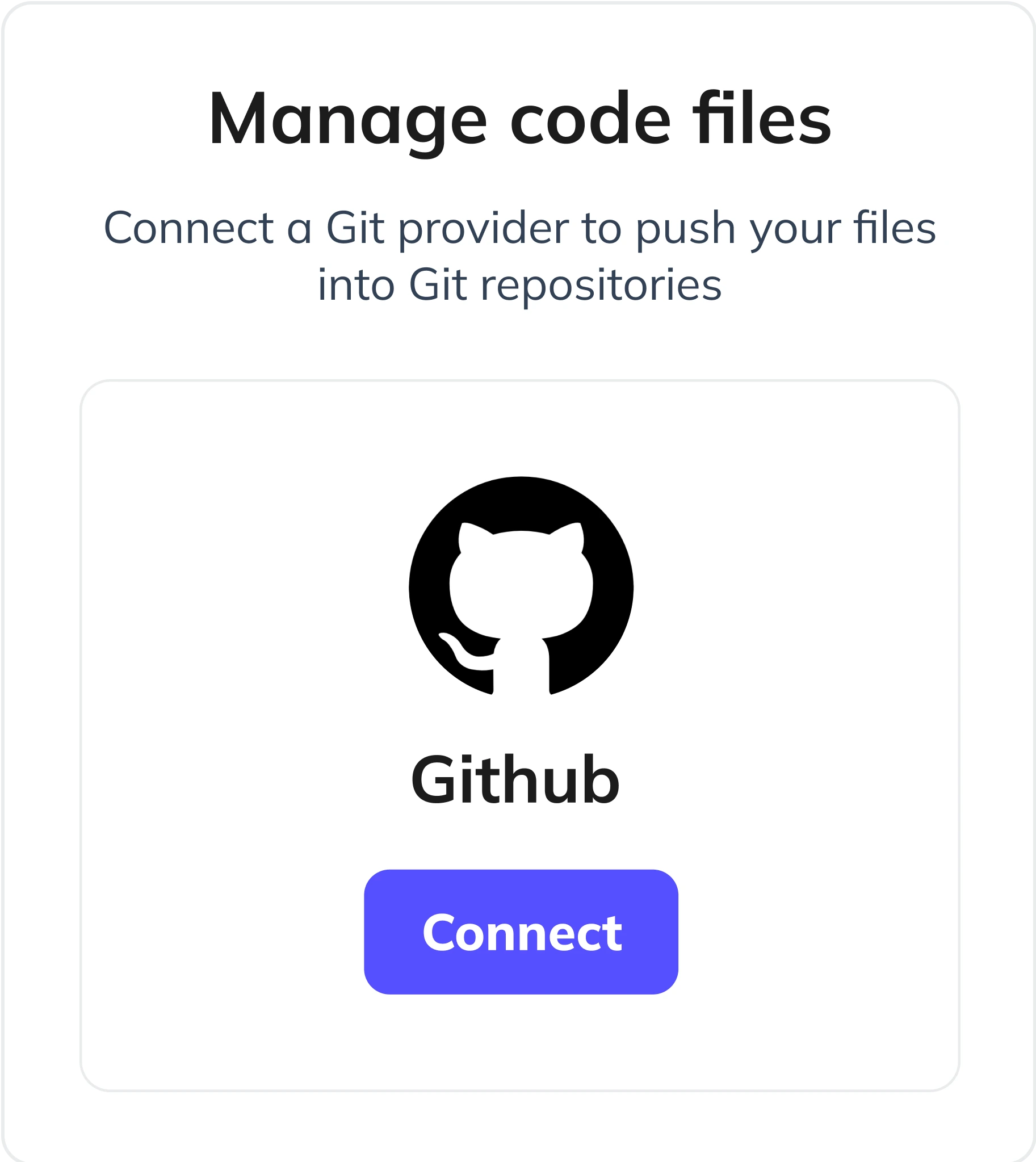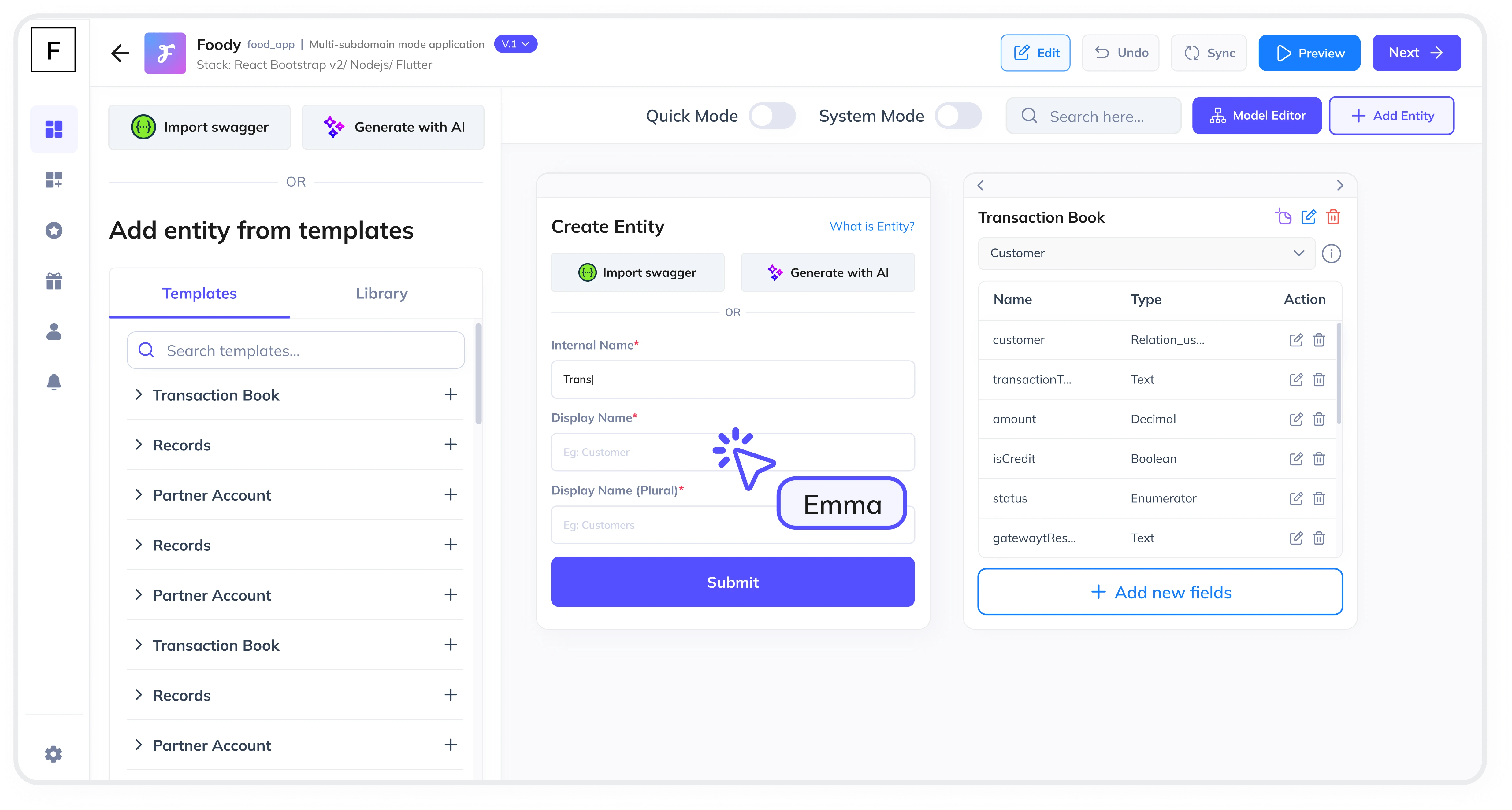In today’s fast-paced business environment, Enterprise Resource Planning (ERP) systems are essential for streamlining operations, improving efficiency, and driving growth. Whether you’re managing inventory, HR processes, finance, or supply chains, a well-designed ERP system can transform your business. With FAB Builder’s low-code platform, creating a customizable, scalable, and production-ready ERP system has never been easier. In this guide, we’ll walk you through the step-by-step process of building an ERP system with customizable modules—all in just a few hours! Plus, we’ll link to detailed guides for each module to help you get started.
Why Use FAB Builder for ERP Development?
- Speed:
- Build an ERP system in hours, not months, with pre-built templates and automated code generation.
- Development Efficiency:
- Focus on your business needs while FAB Builder handles the technical complexities.
- Scalability:
- Start with a basic module and scale to a full ERP system as your business grows.
- Customizability:
- Easily adapt your ERP system to meet new requirements or integrate with other tools.
- Full Source Code Access:
- Download and own the source code, ensuring intellectual property rights remain with you.
- SaaS-Ready:
- Use multi-tenant configurations to create a SaaS-based ERP system and sell subscriptions to B2B customers.
Step-by-Step Guide to Building an ERP System with FAB Builder
Step 1: Define Your ERP Requirements
- Identify the key modules your ERP system needs, such as:
- Inventory Management: Track stock levels, manage reorders, and monitor inventory turnover.
- HR Module: Manage employee data, payroll, recruitment, and attendance tracking.
- Finance Module: Handle accounting, invoicing, expense tracking, and financial reporting.
- Supply Chain Module: Manage inventory, order processing, logistics, and supplier relationships.
- Use FAB Builder’s AI-assisted entity creation to describe your requirements and generate a starting point.
Step 2: Choose Your Tech Stack
- Select your preferred frontend, backend, and database technologies from FAB Builder’s supported tech stacks:
- Frontend: React.js, Angular, Vue.js
- Backend: Node.js, Java, .NET
- Database: MongoDB, PostgreSQL, MySQL
Step 3: Build Your Customizable Modules
- Use FAB Builder’s drag-and-drop tools to create and customize each module:
- Inventory Management Module: Learn how to build a robust inventory management system with our detailed guide: Step-by-Step Guide to Creating ERP Systems with Inventory Management | FAB Builder.
- HR Module: Create a customizable HR Module with features like employee management and payroll processing. Check out our guide: Step-by-Step Guide to Creating an ERP System with a Customizable HR Module.
- Finance Module: Build a finance module for accounting, invoicing, and financial reporting. Read our guide: Step-by-Step Guide to Creating Customizable Finance Module for ERP System.
- Supply Chain Module: Manage inventory, logistics, and supplier relationships with a customizable supply chain module. Explore our guide: Step-by-Step Guide to Creating Customizable Supply Chain Module for ERP System.
Step 4: Integrate Modules
- Combine all modules into a single, cohesive ERP system.
- Use FAB Builder’s integration-ready features to connect with third-party tools (e.g., payment gateways, logistics software).
Step 5: Preview and Iterate
- Use FAB Builder’s live preview feature to test your ERP system and make adjustments as needed.
- Iterate and refine each module until they meet your requirements.
Step 6: Deploy Your ERP System
- Deploy your ERP system to AWS, GCP, or Azure with FAB Builder’s one-click deployment.
- Launch your system and start using it to streamline your business operations.
Key Features of FAB Builder for ERP Development
- Low-Code Platform:
- Build an ERP system in hours, not months, with minimal coding.
- Customizable Modules:
- Tailor each module to meet your specific business needs.
- Integration-Ready:
- Easily integrate with third-party tools and services.
- Production-Ready:
- Deploy your ERP system with confidence, knowing it’s ready for real-world use.
- Full Source Code Access:
- Download and own the source code, ensuring intellectual property rights remain with you.
- SaaS-Ready:
- Use multi-tenant configurations to create a SaaS-based ERP system and sell subscriptions to B2B customers.
Benefits of Using FAB Builder for ERP Development
- Speed and Efficiency:
- Build an ERP system in hours, not months, with FAB Builder’s intuitive tools and templates.
- Scalability:
- Start with a basic module and scale to a full ERP system as your business grows.
- Customizability:
- Easily adapt your ERP system to meet new requirements or integrate with other tools.
- Cost Savings:
- Save on development costs by eliminating the need for a full development team.
- Future-Proof:
- Build on a modern tech stack that supports seamless upgrades and integrations.
Use Cases for FAB Builder’s ERP System
- Small Businesses:
- Streamline operations with a custom ERP system tailored to your needs.
- Enterprises:
- Scale your ERP system to meet the demands of a growing business.
- SaaS Providers:
- Use multi-tenant configurations to create a SaaS-based ERP system and sell subscriptions to B2B customers.





